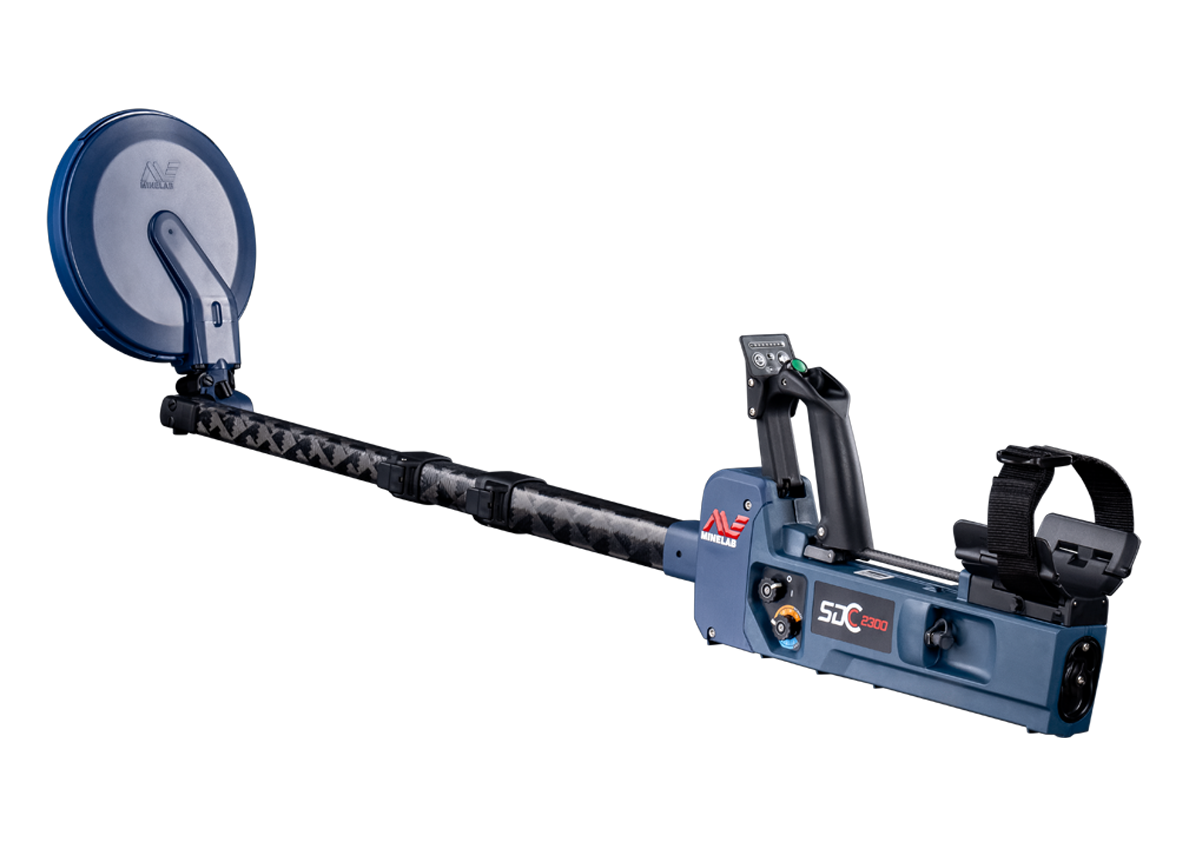I've been enjoying the opportunity to test out Minelab's new SDC 2300. I do a lot of prospecting with various metal detectors and I have been excited about getting my hands on one ever since I heard some of the details of what this new detector would offer to prospectors. Minelab is known for their cutting edge Pulse Induction technology, and the SDC 2300 certainly continues the tradition of revolutionary design that allows prospectors to accomplish things that just couldn't be done before.

The detector I use most frequently is the GPX 5000, but there are plenty of places where the gold tends to be small or porous. In those places I have a high frequency VLF which is hotter on small gold. The VLF gets a good workout because small gold is more common than larger nuggets in many places. The only problem is that there are plenty of places where the number of hot rocks or amount of soil mineralization totally overwhelms a VLF detector. Unfortunately, in those cases there is not much that could be done - until now!
The SDC 2300 is the first Pulse Induction detector capable of hitting small gold in a manner very similar to a high frequency VLF, but also able to ignore hot rocks and mineralized ground, like Minelab's previous PI machines. So when I got a chance to try one out in the field, I headed right for a place in the California gold country where I knew there was small gold, but loads of hot rocks too. I had tried a VLF there, but there were hundreds of hot rocks spread everywhere, and seeing the gold through the chatter of rocks and mineralization with a VLF was just impossible.
When I got to the site, it took only a few seconds to unfold the SDC 2300 and I was ready to start searching. Sure enough, there were plenty of small targets that had been left in the ground in this well worked patch, and while some of these were trash, some were gold! The SDC 2300 performed like a dream. I basically unfolded it, ground balanced and was digging targets in not more than a minute or two. The sounds and target responses it makes are very similar to those of other Minelab Pulse Induction detectors - it just hits on smaller targets than were possible for a PI before. I ran it over some spots with nasty ground mineralization and it just ignored the ground and the hot rocks - but it didn't ignore the gold. I ended up with 8 nuggets for 2.7 grams on the first day out with the SDC, and 6 nuggets for 2.1 grams on the second day.


This is some decent gold from a place that has been well worked with other detectors and previously thought to be played out. I think it was a very successful first couple of days. This new detector from Minelab is going to be a really valuable tool for prospectors to recover some gold that was just beyond reach previously.

I've got lots of plans for the SDC 2300 over the rest of this summer. I plan to take it out to search for specimen gold in some old mine dumps, to take it underwater in a few gold bearing streams where hot rocks are a problem for VLFs, and pack it in to a number of hard to reach places I know that have small, porous, difficult to find gold. Because of its compact size and easy portability, I will be taking it on a plane with me on a prospecting trip to Alaska. The SDC 2300 is going to be a big producer for me this year, and I'm planning to do further Treasure Talk blogs on these prospecting adventures, so I hope you'll follow along and watch how well the SDC 2300 performs.





















Comments
To make comments you must be logged in, please note comments will not display immediately due to moderation